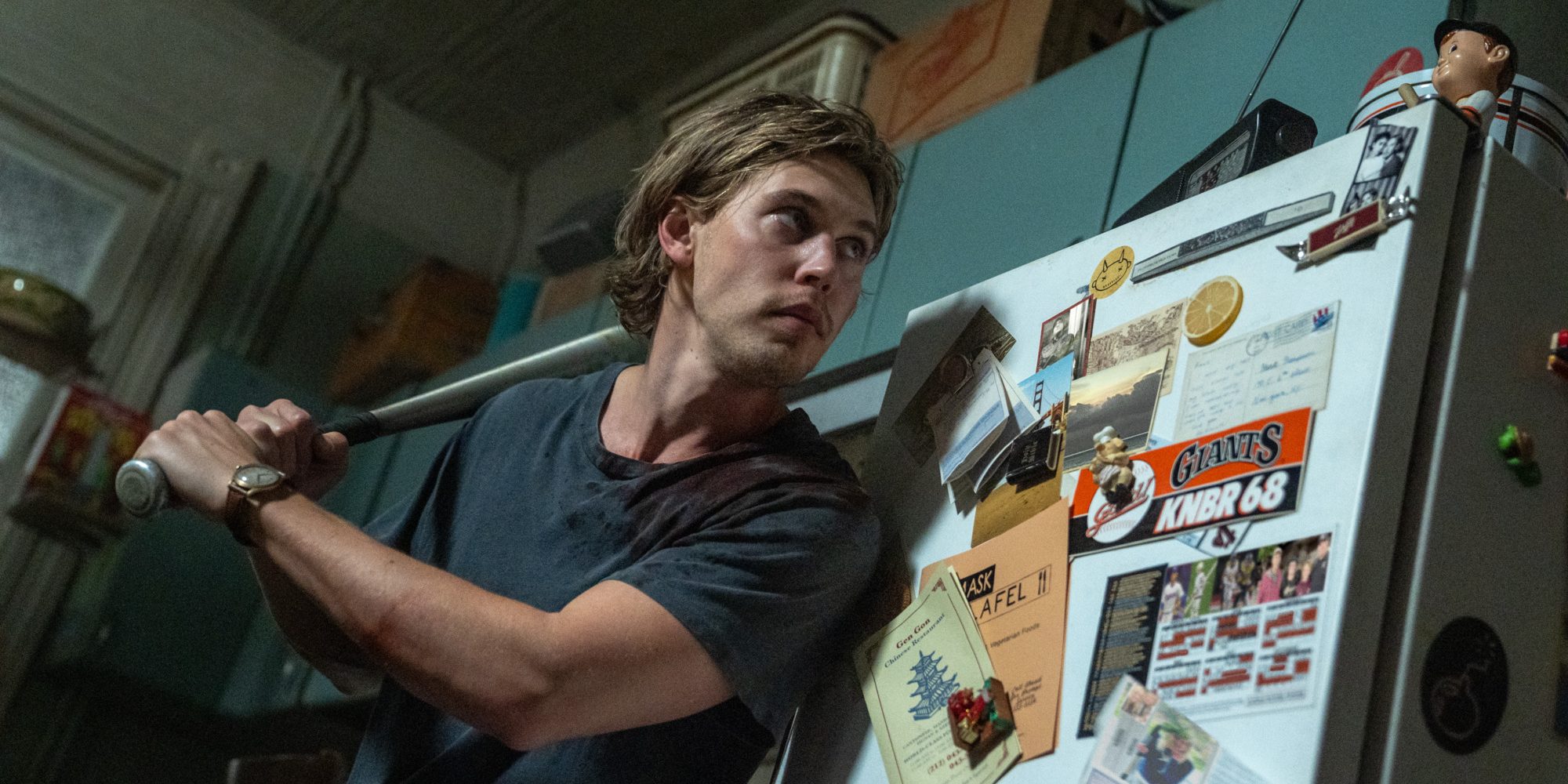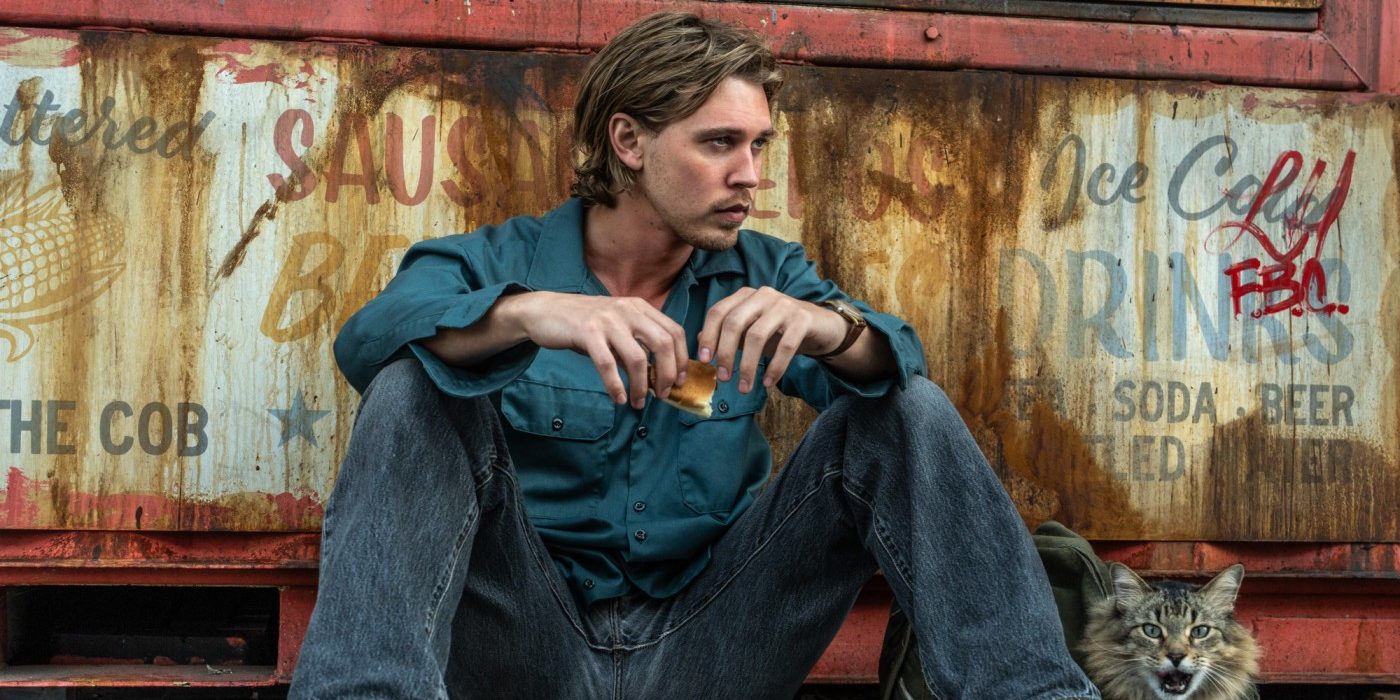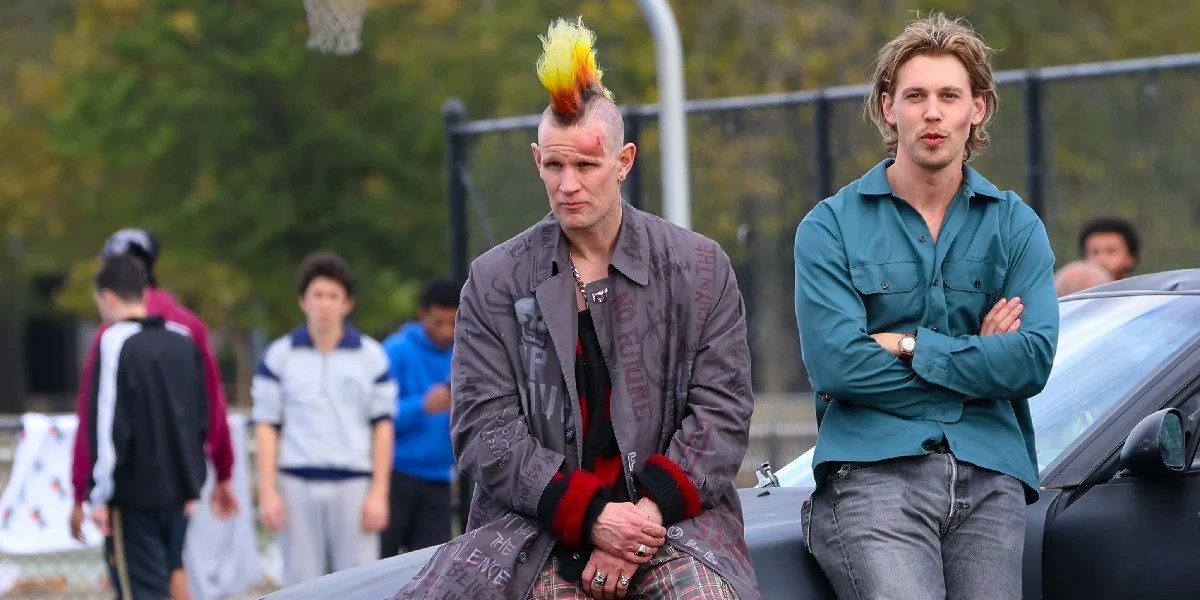The crime drama thriller film ‘Caught Stealing’ chronicles the wickedly entertaining life of a man named Henry “Hank” Thompson (Austin Butler), who inadvertently gets caught in a web of danger and crime. Set in the New York City of 1998, the world of the protagonist takes an unexpected turn when he agrees to take care of his neighbor’s cat, leading him towards dangerous gangs, chases, and an all-out battle for survival. Supported by compelling performances of Regina King, Zoë Kravitz, and Matt Smith, each of whom effortlessly slips into their respective complicated characters, the film showcases the struggle to survive in the city’s wild streets. Directed by Darren Aronofsky, the taut narrative that touches upon themes of hustle, redemption, and loyalty, the strong characters, and the setting, enhance the overall gritty vibe, making the film an immersive experience.
Caught Stealing Sharply Captures the Raw Essence of Charlie Huston’s Novel and New York

Despite being a fictional tale, ‘Caught Stealing’ is a grounded thriller film that takes the audience into the hustle and bustle of New York City. The world of Charlie Huston’s eponymous 2004 novel is brilliantly reflected in the film, for which the screenwriter also serves as the writer. In the novel, Hank is taken on a wild ride across the streets of NYC after agreeing to take care of his neighbor’s cat, which is depicted in the film. Though the source material is set in the year 2000, the film is set in 1998. The latter also looks at the world of crime and the brutal hustle culture of New York City, which originates from the content of the novel. The urban atmospherics and the landscapes used in the film help it to deliver an authentic experience to the viewers, connecting them to the vibe of the city during the ending phases of the 20th century.
The novel also looks at the elements of survival in dangerous scenarios and the choices made by a man who is pushed to the edge. In the novel, Hank depends on his intelligence and street smarts to survive his ordeal, which is also represented poignantly in the film. His interactions with criminals and their world are an essential aspect of the novel, which is also represented in the movie. In both works of art, the protagonist resorts to violence only because he encounters rough people and sees no other means to survive. In real life, surviving tough situations often requires ordinary people to rethink their morality and embrace violence, despite not wanting to do so. The film captures social apathy in an intriguing manner, which is also reflected in the film through the experiences of the protagonist, and the lengths that he must go to in order to just survive and redeem himself.
Austin Butler’s Authentic Portrayal of Hank Reflects the Real Struggles of City Life
Austin Butler’s depiction of Hank is one of the highlights of the film, as it captures the essence of the protagonist and the complexities of his human experience. In an interview with Variety, Butler opined that he tried to live his character as much as possible and also tried to get adjusted to the domestic conditions that Hank lives in, which also involved sleeping in the character’s apartment. The actor stated, “For one night, I had the whole apartment to myself.” He added, “I played music, I danced around, and I ate Chinese food in there. It made me feel like I really lived there. I slept there all night, and I woke up to the crew coming in while I was in my underwear.” This revelation by Butler indicates that the film is intended to feel as close to reality as possible.

Despite being a fictional tale, the urban existence of the protagonist originates from the experiences of people in the struggles of the real world. Aronofsky added to the topic of Hank by saying, “I wanted to make a film about someone people can relate to.” This hints at the idea that the protagonist had to reflect reality in his own way because the filmmaker aimed to connect to the viewers on a personal level. The director also stated, “Hank is a pretty good guy. He’s not hurting anyone. He’s just a small town boy in a big city, and the world kind of crumbles around him.”
Aronofsky concluded, “It’s nice to have a hero who doesn’t have a cape and is a normal person.” This is a poignant statement as it reflects the essence of people moving into big towns to pursue greater things, but getting caught up in a world that is unknown to them on a psychological level. Thus, the reality of the character is not something that exists in a social vacuum, but a representation of common people who pursue lives in big cities, away from the comforts of small towns. Hank isn’t just a fictional character, but a protagonist whose arc is connected to reality in unique ways.
Read More: Where Was Caught Stealing Filmed?


You must be logged in to post a comment.